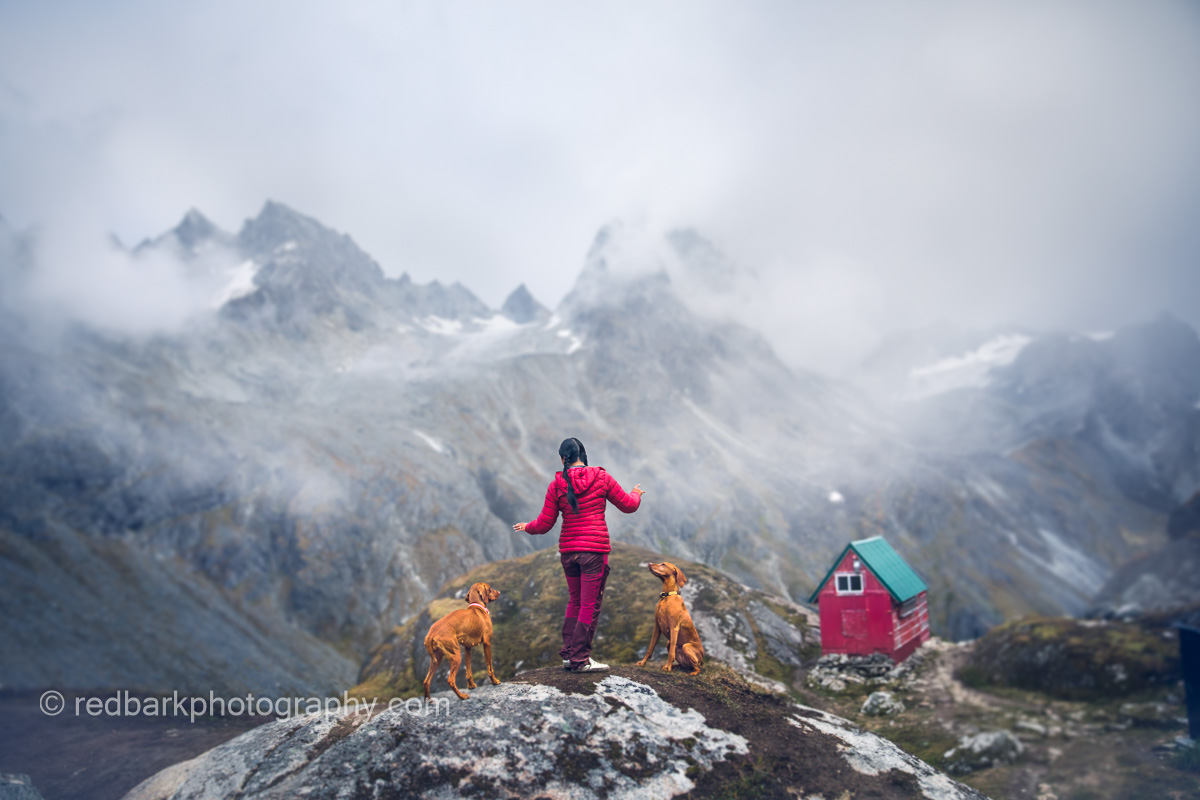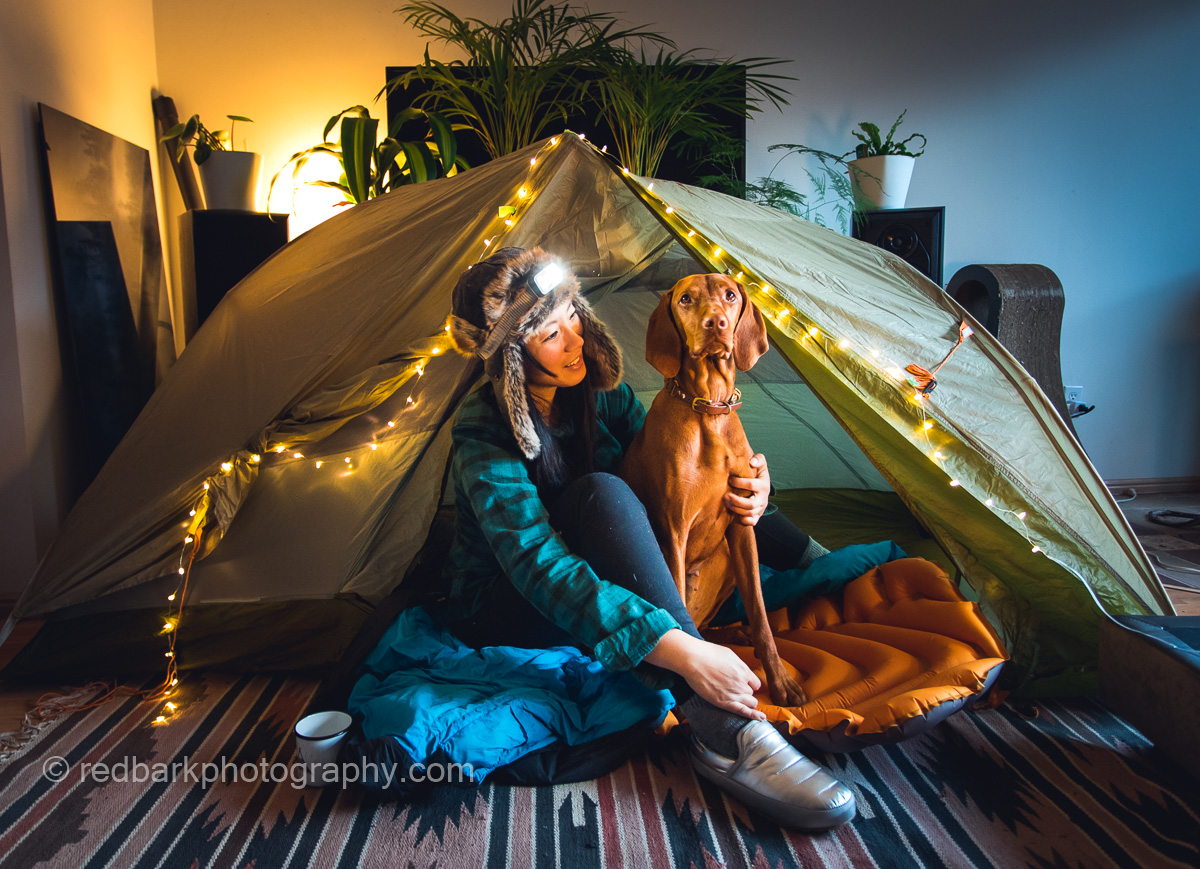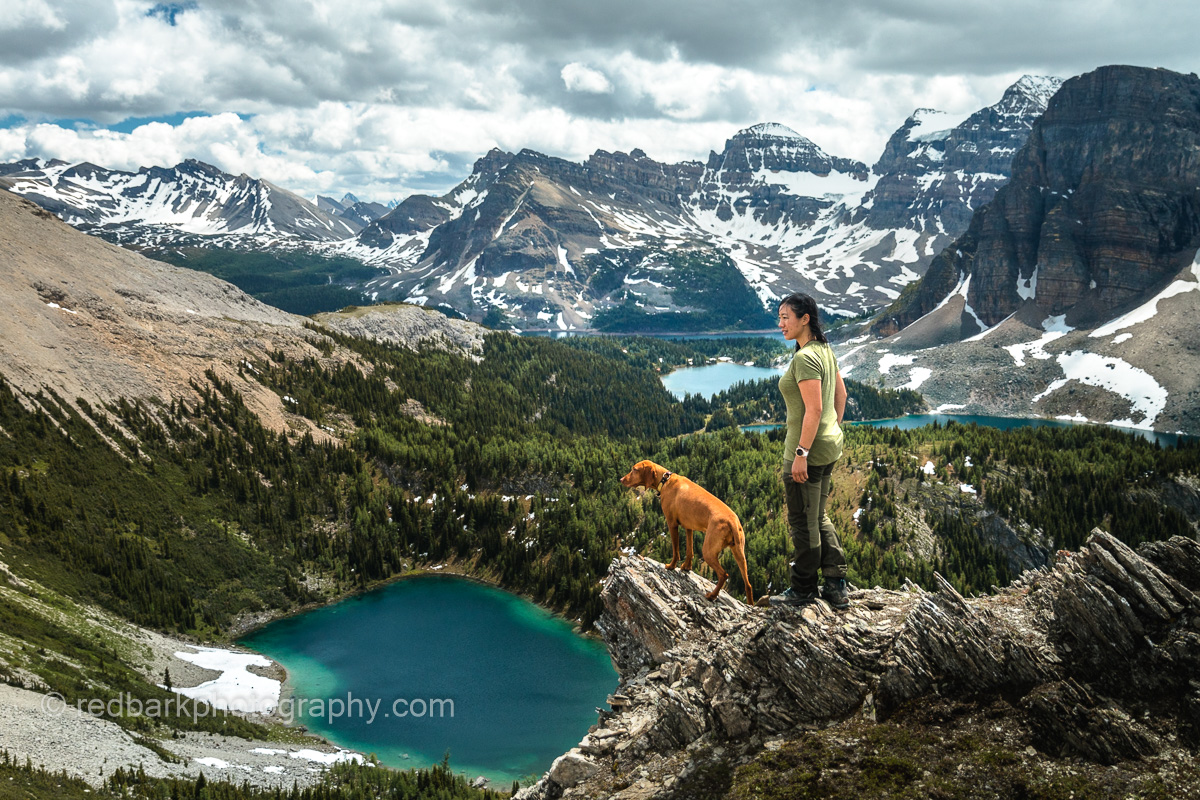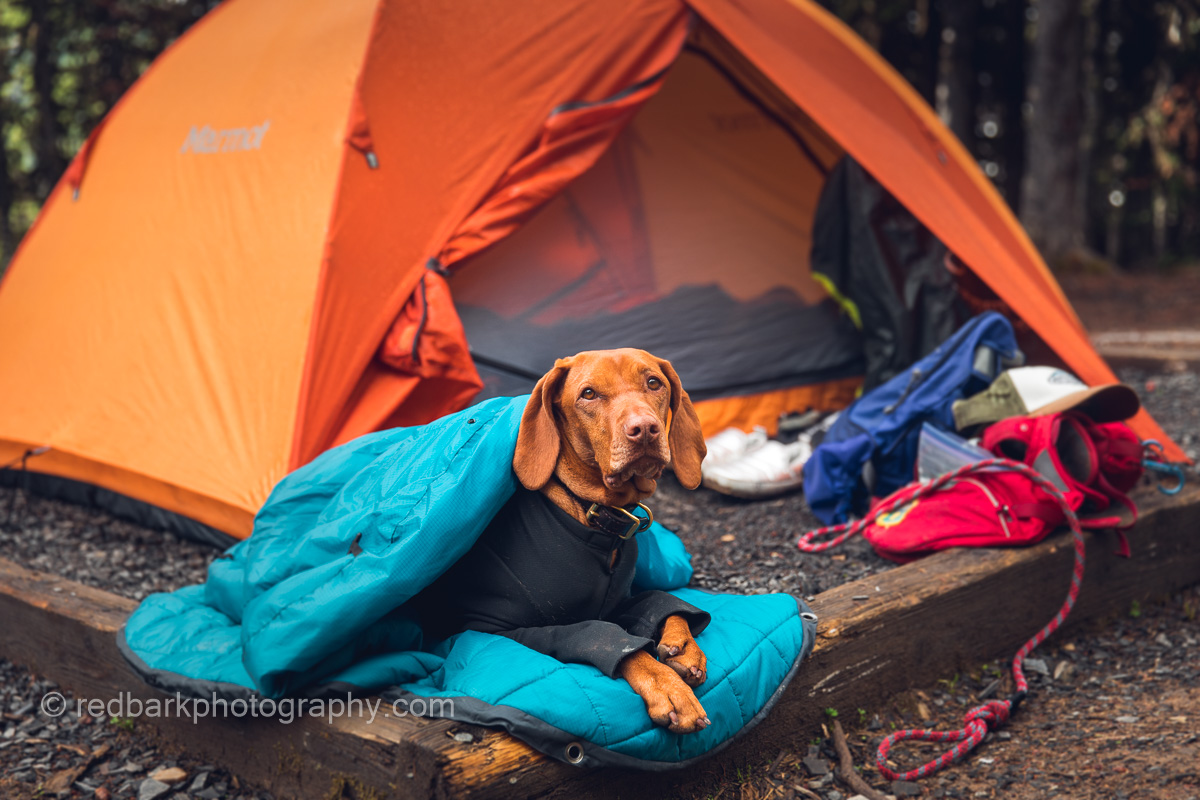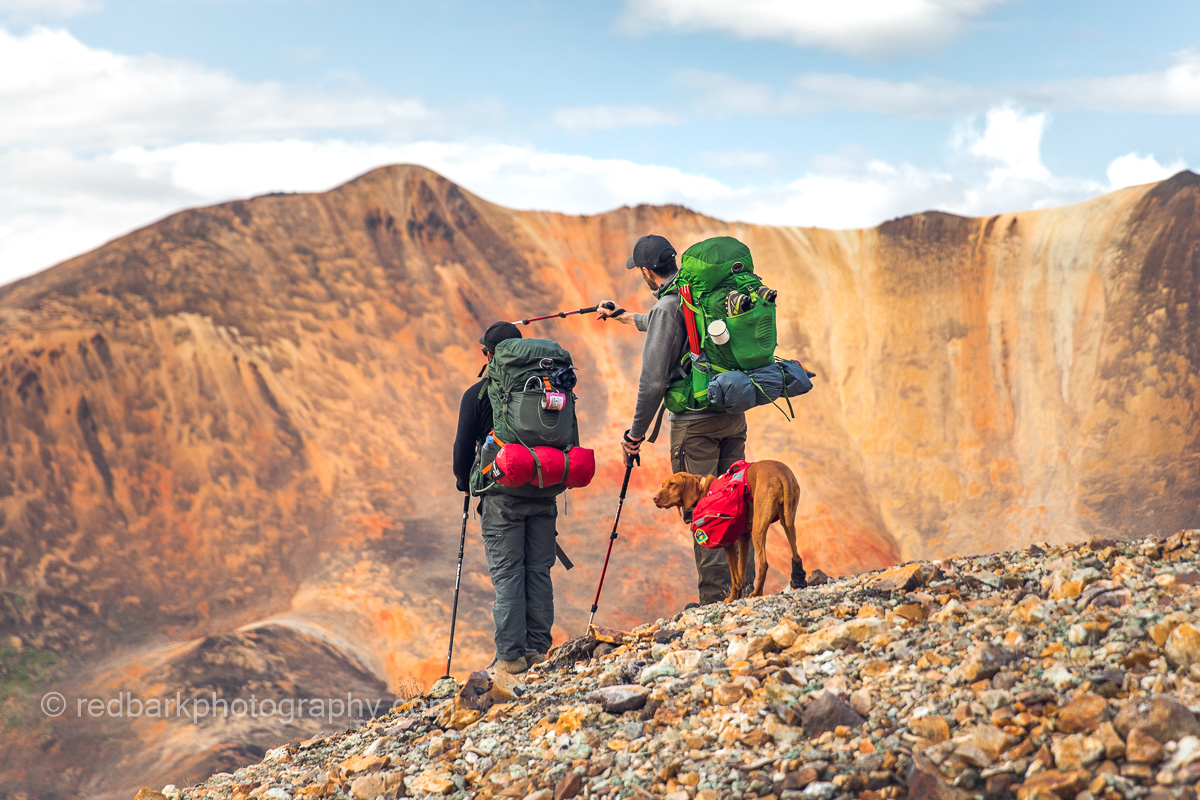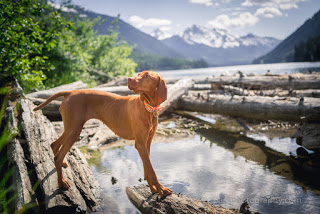Goldmint Trailhead to Mint Hut
Deep in the Talkeetna Mountains in Alaska, a local favorite trail Hatcher Pass became world famous. Within the area, there are loads of options for hiking and exploration, but we only had a couple days, and very few days without an abundance of rain. My friend Kristina and our dogs Whiskey, Bourbon, and Cooper set out on a backcountry adventure exploring several huts and passes in the backcountry. As with most backcountry adventures in Alaska, our hike did not go according to plan.



First off was the 8 mile (13km) hike on the Gold Mint Trail to Mint Hut, where we planned to stay the first evening. The weather was beautiful and sunny (the only day it was!) and the hike in was the easiest part of the entire trip. We still did manage to get lost close to the hut, but we spent that time eating berries off the ground and taking photos so nothing very problematic. Because there had been so much rain, much of the trail was extremely muddy (re: a pond) so poles and waterproof boots were really helpful.

When we finally found the hut, we spent the evening taking photos and enjoying the views. The clouds were coming in thicker so we were glad to have a hut to sleep in. Unfortunately the hut was also pretty damp and moldy smelling and all the pots and cups were pretty covered in black muck, so if you’re using anything stored inside, clean it well first. Also frustrating was the amount of dog poop left all around the hut. I’ve never experienced such poor management of dog feces on any trail or hut before (and that’s saying alot!) so PLEASE PLEASE pick up after your dog should you come here.

Mint and Bomber huts are maintained by the MCA (Mountaineering Club of Alaska) so make sure you pay your yearly $20 fee online before you go. Because the weather had not been great, and we were at the end of the season (end of August), we were excited to try out the huts. Any of the huts along the route can be very busy so we brought an extra tent just in case, but luckily, there was only one other couple that ended up there that evening. With dogs, you must climb up a vertical ladder, or let them sleep on the ground. Our dogs are all smaller and hairless (and sleep inside our sleeping bags) so we had them up with us.

Mint Hut to Bomber Hut Via The Backdoor Gap (6.5km)
This was so much fun! After Mint Hut, there are no more trails and you must be able to make your own way. You start heading up the steep scree boulder field heading towards the Backdoor Gap. The boulder field can be quite tough on dogs that are not used to climbing scree and rock. The rocks can rub paws raw, and the steep terrain can be dangerous if not navigated properly. Again, we didn’t take the most direct route, but we eventually did find the gap with extra scrambling and climbing and had quite a bit of fun doing so.

The Gap itself is at the top of a glacier. You are climbing a small gap that can be snow-filled depending on the time of the year, or, in our case was currently snowing. Because it was so cold, windy, and snowing, we didn’t take too many photos and concentrated on descending. There were several questionable ropes hanging down that we used, but this section would be very steep for dogs.

Next, you need to hike from the top of Penny Royal Glacier, all the way down. There were no crevasses we saw, and the glacier was pretty easy although quite slippery and was a nice break from scree climbing all morning. Eventually you drop down to the tundra and keep hiking until you find Bomber Hut. At this point it was starting to rain and we were quite tired from carrying our huge packs over the day.



Bomber Hut was much nicer than Mint (although maybe not so pretty from the outside). It’s newer and with better airflow so it didn’t smell like mold. Again we were the first ones in so we made ourselves at home and started exploring outside between spells of rain.

The view from Bomber Hut were breathtaking. As the rains came and went, we were audience to moody lighting over an arena of mountain passes. Over the afternoon, more people came to join us and we had a lovely crew to chat with for the evening.


Our next day, we had been hoping to hike to Snowbird Hut, however it was pouring rain and snow so we decided it would be nicer to take a day in rather than soaking everything we owned in cold rain for 5 hours without seeing any views.

We spent the laziest day in reading comics that had been left behind and chatting to the huge group of people that wandered through. Somehow Bomber Hut became the meeting place and over the day we had over 10 people max out the sleeping space. There were even several outside in tents in the drenching rain.

Bomber Hut To Reed Lakes Trailhead Via Bomber Pass (10.5km)

Since we changed our plans not to go to Snowbird, we ended up hiking out of Bomber Hut through Bomber Pass on our last day. We woke up to snow. So much snow! The snow turned to rain, but we could see at higher elevations it would be very very white. After a quick breakfast we started to head out and were the first group up the boulder field and onto the Bomber glacier to Bomber Pass.


Bomber Pass is named as such because there is a TB-29 Superfortress Bomber Plane that crashed during a training mission in 1957 killing 6. Because it was snowing so hard, the other group that was heading up had decided to bypass the wreckage (it’s on the other side of the glacier). By the time we had located and explored the wreckage the other group had caught up to us and we were able to head up the pass to drop down onto Upper Reed Lake.

The pass was quite dangerous with a new foot of snow that had fallen over the past day (making it 2 feet of fresh snow). Underneath the snow was pure ice and I hadn’t brought my ice axe so at one point I slipped and slid and slid, thankfully catching my foot on some rocks before I slid down a kilometer down the glacier. The top of the pass was totally covered in snow (snow covered rocks) so it became very very tricky to make our way up. Normally there should be a clearer path with rope but everything was so covered in snow.

Upper and Lower Reed Lake
Unfortunately since it was snowing so hard, we made our way through Upper Reed Lake and down through the boulder field only thinking about survival. Steep fresh snow covered boulders are a minefield and not fun on a sunny day. We were soaked to the bone with huge packs on and dogs to control. The snowy rocks are even more dangerous for dogs, especially inexperienced ones and a dog following us later that day tore a nail or toe and had to be carried the rest of the way. Someone else also injured their leg on the descent so be very methodical and careful.
Once to Upper Reed Lake, the trails started again. I could see that normally these trails would be absolutely beautiful, but snow turned to pounding rain and we were quite tired from the pass so we just put our heads down and hiked out as fast as we could. Everything was so soaked my phone stopped working and our dogs were quite miserable. The trails had turned into muddy river that I fell in (and just laid my head down for a minute). Another area was so flooded with water that it was higher than my knee level when I sloshed through. I think my dog was swimming.
From the parking lot we were able to hitch a ride to Mint Trailhead and were able to change our clothes and dry out finally!

If you wonder why my bag was so heavy, check out here to see what I carry with me for camping. If you’d like to try out tent camping with dogs, here’s how, and if you’re looking for winter dog gear, first aid kits for dogs, or just other adventures, check out the links!
